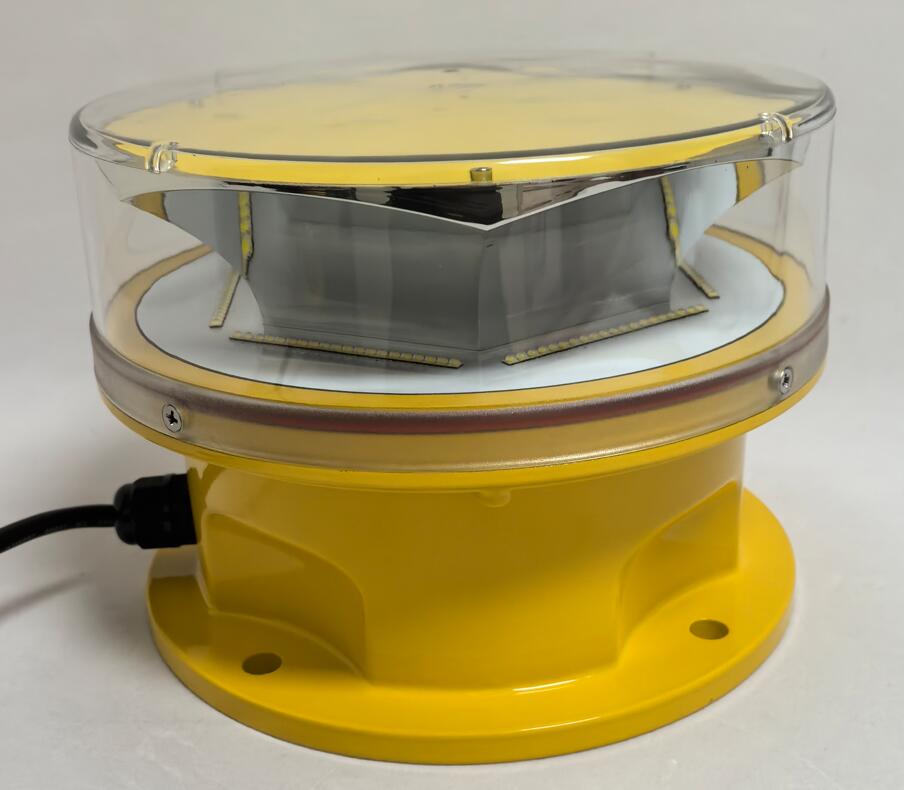In modern construction and industrial operations, cranes play a vital role in lifting and moving heavy materials. However, their towering structures pose a significant risk to low-flying aircraft, especially near airports or in urban areas. To mitigate this hazard, aircraft warning lights for cranes are essential. These lights ensure visibility, preventing collisions and enhancing overall airspace safety. This article explores the importance, types, regulations, and best practices for using aircraft warning lights on cranes.
Why Are Aircraft Warning Lights Necessary for Cranes?
Cranes, particularly those exceeding certain heights, can interfere with aviation pathways. Without proper illumination, they become nearly invisible to pilots during nighttime or low-visibility conditions. Aircraft warning lights for cranes serve as a critical safety measure by:
Preventing mid-air collisions – High-intensity lights make cranes detectable from a distance.

Complying with aviation regulations – Many countries mandate warning lights on tall structures.
Enhancing worksite safety – Proper lighting reduces risks for both aircraft and ground personnel.
Types of Aircraft Warning Lights for Cranes
Different lighting systems are used depending on crane height, location, and aviation requirements. The most common types include:
1. Red Obstruction Lights
Steady-burning or flashing red lights.
aircraft warning lights crane
|
Used for cranes exceeding 200 feet (60 meters).
Visible from all directions.
2. Medium-Intensity White Strobe Lights
Bright, flashing white lights.
Effective during both day and night.
Often used in combination with red lights for maximum visibility.
3. Low-Intensity Red Lights
Suitable for cranes under 200 feet.
Energy-efficient and long-lasting.
Typically LED-based for durability.
aircraft warning lights cranes
|
4. Dual Lighting Systems
Combine red and white lights for enhanced detection.
Automatically adjust brightness based on ambient light conditions.
Regulations and Standards
Various aviation authorities, including the FAA (Federal Aviation Administration) and ICAO (International Civil Aviation Organization), set guidelines for aircraft warning lights on cranes. Key regulations include:
Height Requirements – Structures above a certain height (often 200 feet) must have warning lights.
Light Intensity and Color – Specifications vary based on location (urban vs. rural) and proximity to airports.
Power Supply – Backup power may be required to ensure continuous operation.
Maintenance – Regular inspections are necessary to ensure functionality.
Best Practices for Installing Aircraft Warning Lights on Cranes
To maximize effectiveness, consider the following:
Proper Placement – Lights should be positioned at the highest point and along the crane’s boom for full visibility.
Automatic Light Sensors – Adjust brightness based on daylight to conserve energy.
Durability – Choose weather-resistant and corrosion-proof lights for outdoor use.
Compliance Checks – Verify local aviation laws before installation.
Regular Testing – Ensure lights function correctly, especially before night operations.
Aircraft warning lights for cranes are a non-negotiable safety feature in modern construction and industrial zones. By adhering to aviation regulations and implementing the right lighting systems, companies can prevent accidents, protect pilots, and maintain efficient operations. Investing in high-quality, compliant warning lights is not just a legal obligation—it’s a commitment to safety in an increasingly crowded airspace.
As technology advances, we can expect smarter, more energy-efficient lighting solutions to further enhance crane visibility and aviation safety. For now, ensuring proper installation and maintenance remains the best way to safeguard both ground and air operations.

